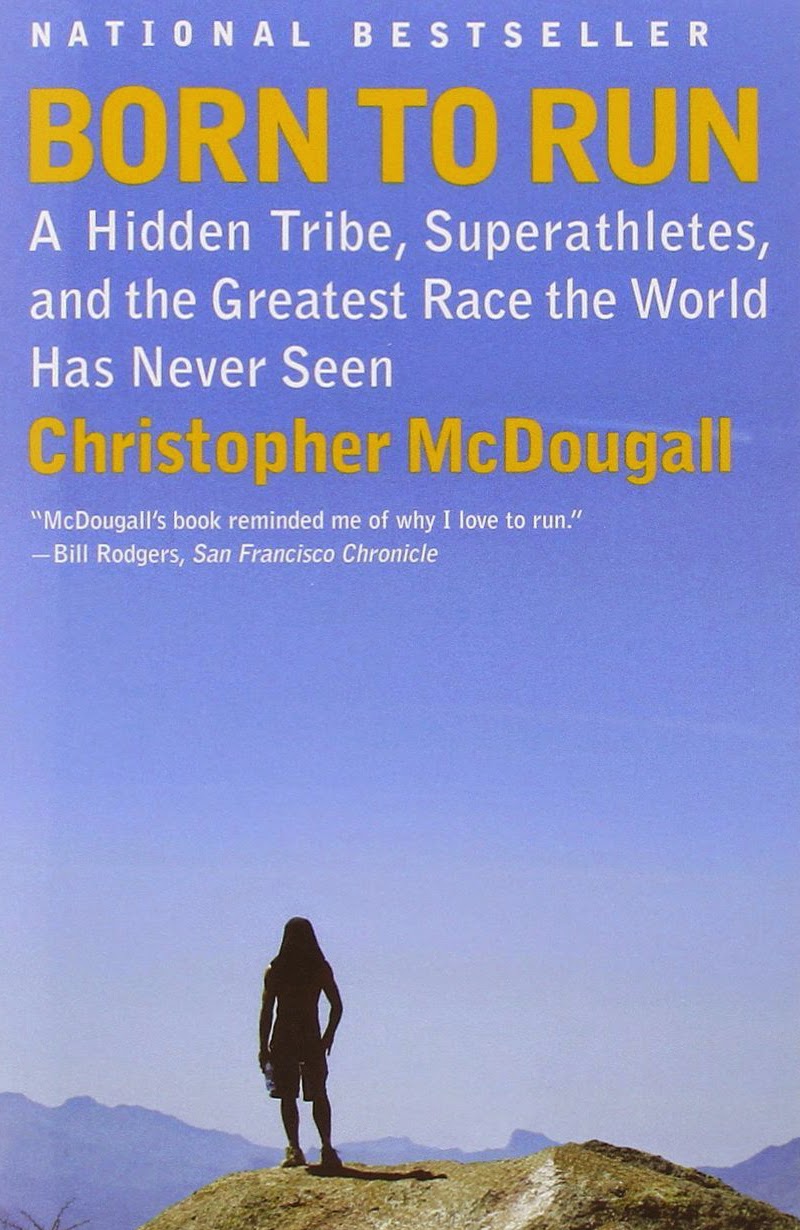"Born to Run: A Hidden Tribe, Superathletes, and the Greatest Race the World Has Never Seen"
Christopher McDougall
Running injuries are one of the sport's few potential consequences, but with the release of "Born to Run" in 2009 and its promise of a better way, Christopher McDougall threw barefoot running into the spotlight and helped kick off a revolution. In "Born to Run," McDougall calls into question much of the common doctrine pertaining to training, diet, and running mechanics, and has since paved the way for some much needed debate on these topics. While the fervent interest in ditching one's shoes has since died down, "Born to Run" has left countless minimalist converts in its wake and the ideas presented in its pages are still worth talking about today as continued investigation brings new information to light.
Many runners can certainly relate to having pondered the nature of injury, but few have gone as far as McDougall in a search for answers. "Born to Run" begins with a simple attempt on McDougall's part to ascertain the cause of his running injuries and how he can prevent them, but it quickly sprawls into an adventure of epic proportions. McDougall's quest for running enlightenment brings him into contact with a host of eccentric experts, athletes, and coaches, and takes him on a journey deep into the Copper Canyons of Mexico to learn the secrets of running from the Tarahumara, a Native American group famed for their ability to run hundred of miles in nothing more than flimsy sandals. Through the melding of personal narrative and a well-curated assortment of thought-provoking research, McDougall crafts a truly remarkable novel.
Christopher McDougall
Running injuries are one of the sport's few potential consequences, but with the release of "Born to Run" in 2009 and its promise of a better way, Christopher McDougall threw barefoot running into the spotlight and helped kick off a revolution. In "Born to Run," McDougall calls into question much of the common doctrine pertaining to training, diet, and running mechanics, and has since paved the way for some much needed debate on these topics. While the fervent interest in ditching one's shoes has since died down, "Born to Run" has left countless minimalist converts in its wake and the ideas presented in its pages are still worth talking about today as continued investigation brings new information to light.
Many runners can certainly relate to having pondered the nature of injury, but few have gone as far as McDougall in a search for answers. "Born to Run" begins with a simple attempt on McDougall's part to ascertain the cause of his running injuries and how he can prevent them, but it quickly sprawls into an adventure of epic proportions. McDougall's quest for running enlightenment brings him into contact with a host of eccentric experts, athletes, and coaches, and takes him on a journey deep into the Copper Canyons of Mexico to learn the secrets of running from the Tarahumara, a Native American group famed for their ability to run hundred of miles in nothing more than flimsy sandals. Through the melding of personal narrative and a well-curated assortment of thought-provoking research, McDougall crafts a truly remarkable novel.
With a cast of unforgettably offbeat characters and the interjection of controversial theory, "Born to Run" has all the makings of a great page-turner. Some may find fault with McDougall's liberal use of artistic license or the fact that the presented research had clearly been chosen to lead towards very specific conclusions, but "Born to Run" is an exemplar of good storytelling more than it is a memoir comprised of irrefutable facts. Taken with a grain of salt, "Born to Run" is an incredible read, especially for those who enjoy tales of adventure or have toyed with the idea of transitioning to minimalist running. Whether you end up loving it or hating it though, there's no denying that McDougall's premier novel has left a lasting impression on the culture and landscape of running, and if for nothing else, is worth reading so that you can engage in the inevitable discussions that continue to occur long after this book's initial publication.

No comments:
Post a Comment